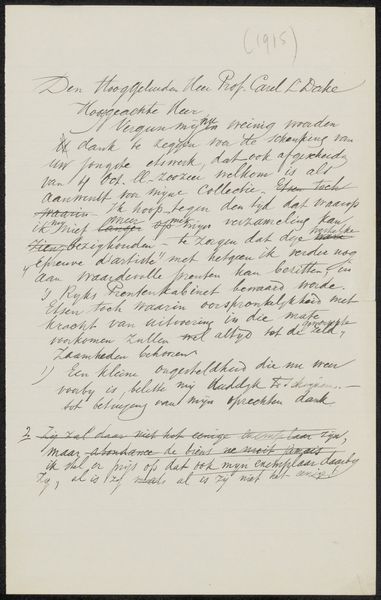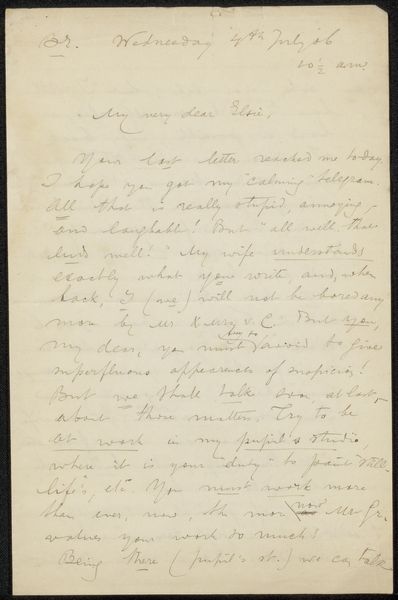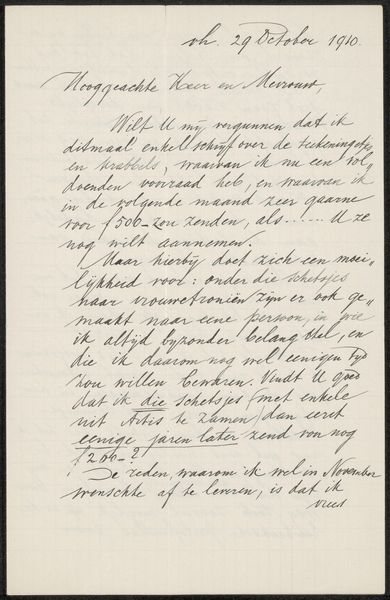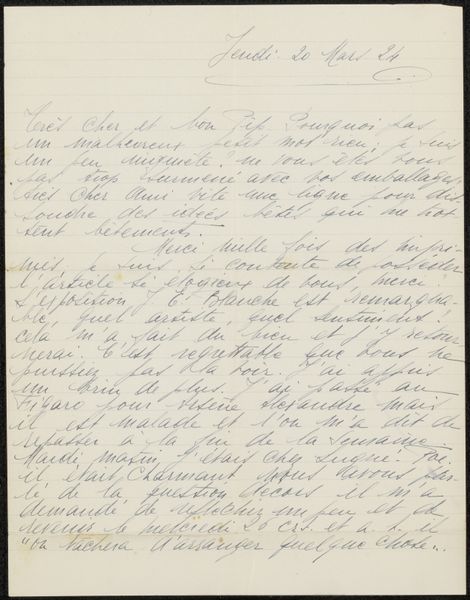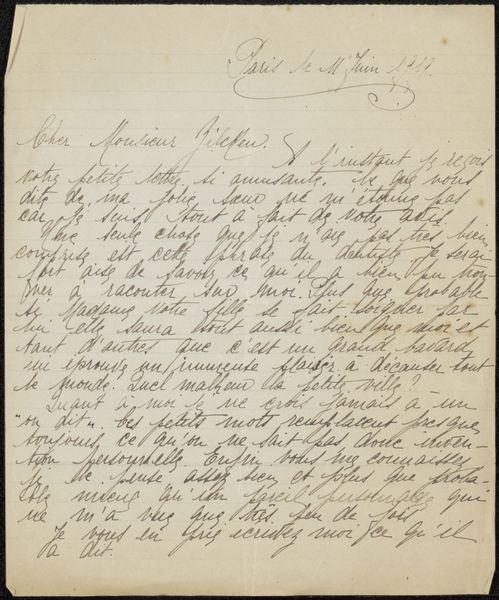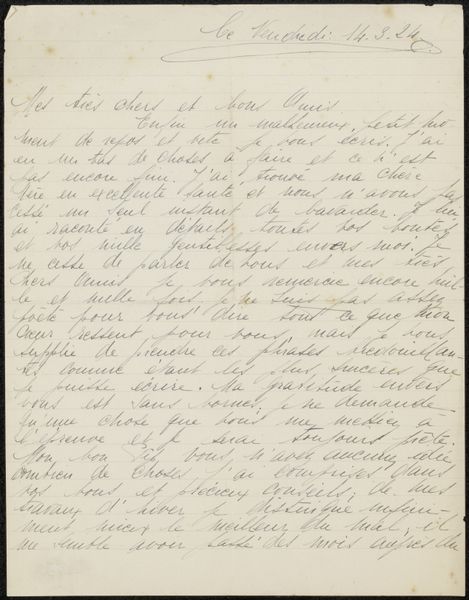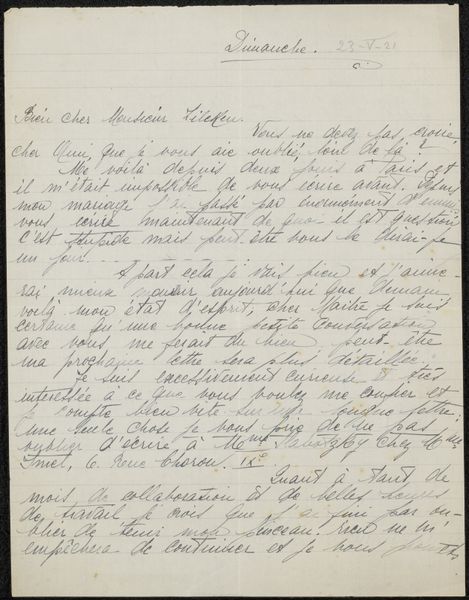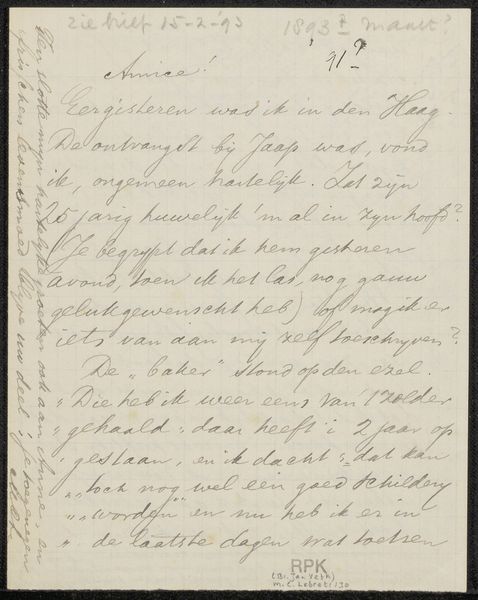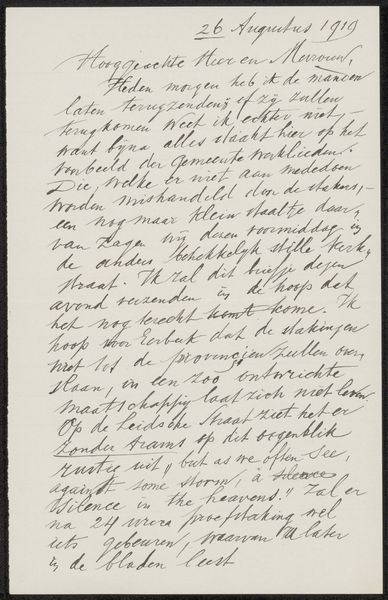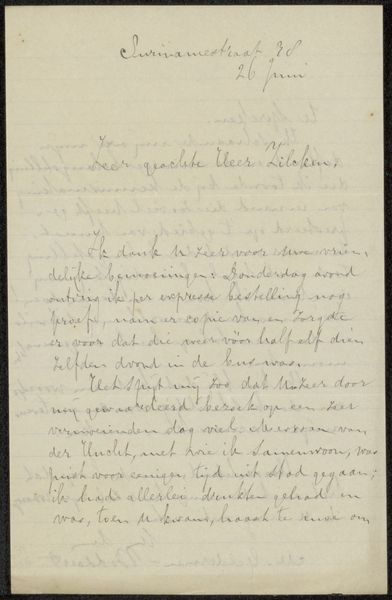
drawing, paper, ink, pen
#
drawing
#
ink paper printed
#
paper
#
ink
#
pen-ink sketch
#
pen work
#
pen
Copyright: Rijks Museum: Open Domain
Curator: We're now in front of "Brief aan Pieter Haverkorn van Rijsewijk," a pen-and-ink drawing on paper by August Allebé, dating from possibly 1905-1914. Editor: Immediately, I’m struck by its delicate formality, a private communication made public, almost ghostly in its fragility. The texture of the paper seems crucial. Curator: Absolutely. The controlled lines of the penmanship create a kind of visual grid, playing against the looser flow of the ink itself. Semiotically, the handwriting operates as a trace, an index of the artist's presence. Editor: For me, the letter’s physical presence as an object conjures a lost world of personal correspondence. The act of writing, the texture of the paper – these all become symbols of connection, human interaction across distance and time. What stories might the recipient have read here? What emotions did this script inspire? Curator: The form itself – the careful spacing, the flourishes – contributes to the overall meaning. You could argue that even without understanding the text, the viewer perceives a certain decorum and intention. The graphic quality of each word presents a layered meaning. Editor: I see it as more of an intimate object imbued with the soul of both the sender and the receiver. A tangible representation of trust, hope or maybe even urgency communicated from one mind to another in a past long gone by. Curator: An interesting interpretation. The beauty of this drawing lies in its ambiguity and subjective experience. We read its construction, materiality and layout as symbolic to this time. Editor: Indeed. We see more in its forms than Allebé likely had thought or anticipated in his era of pens and hand delivered post. Curator: Ultimately, “Brief aan Pieter Haverkorn van Rijsewijk” shows how form and symbolism coalesce. Editor: It's a subtle whisper of another time, open for interpretation, revealing something new each time we visit.
Comments
No comments
Be the first to comment and join the conversation on the ultimate creative platform.

